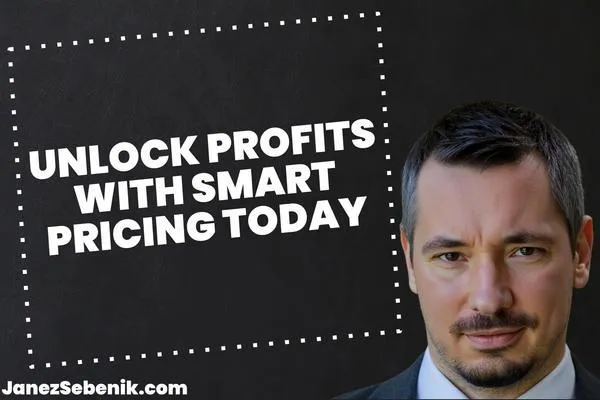
How to Price Smartly
Setting the right price for your product can make or break your business. It's not just about slapping a number on a tag and calling it a day. You need to be smart about it.
Pricing your product effectively involves understanding your costs, knowing your customers, and analyzing the competition. It's a balancing act between making a profit and keeping your customers happy.
Don't worry, though. With the right strategy, you can find that sweet spot. You'll be able to attract customers while keeping your business profitable. It's all about being clever and flexible with your pricing approach.
Key Takeaways
Figure out your costs and set prices that cover them plus a healthy profit margin
Know what your customers are willing to pay and adjust your prices accordingly
Stay flexible and be ready to change your pricing strategy as market conditions shift
Understand Your Costs
Pricing smart means knowing your numbers inside and out. Let's dive into the nitty-gritty of costs that'll make or break your business.
Break Down Direct Costs
Direct costs hit your wallet right away. They're the obvious expenses tied to making your product or delivering your service.
For products, think materials and labor. If you're selling t-shirts, it's the fabric, ink, and the time it takes to print them.
For services, it's mostly about time. How many hours does it take you to complete a project? Multiply that by your hourly rate.
Don't forget about packaging and shipping if you're mailing stuff out. These costs add up fast!
Pro tip: Make a list of every single thing that goes into your offering. Nothing's too small to count.
Factor in Indirect Costs
Indirect costs are sneaky. They're not tied to one specific product or service, but you gotta pay 'em to keep the lights on.
Rent, utilities, internet, software subscriptions - all that jazz. These costs keep your business running smoothly.
Don't forget about marketing and advertising. You need customers to know you exist, right?
Here's a trick: Take your total indirect costs for a month and divide by the number of products or services you sell. That's your per-unit indirect cost.
Add this to your direct costs, and boom! You've got your true cost per unit. Now you're ready to price like a boss.
Knowing your costs inside out is key to pricing smart. It's the difference between making money and just spinning your wheels.
Know Your Customers
Knowing your customers is key to setting the right prices. It's about more than just numbers - it's about understanding who's buying and why.
Identify Your Target Market
Who's your ideal customer? Get specific. Age, income, location - all that good stuff. Don't try to please everyone. It's a fool's game.
Think about what problems your product solves. Who needs that solution the most? Those are your people.
Look at your current customers. What do they have in common? That's a goldmine of info right there.
Psychological pricing can work wonders. People love feeling like they're getting a deal. $99.99 feels way cheaper than $100, even though it's basically the same.
Understand Customer Convenience
Convenience is king. People will pay more for easy. Think about it - how many times have you paid extra for delivery?
What makes your product more convenient than the competition? That's your secret sauce. Play it up.
Consider offering different options. Some folks want the bare bones, others want all the bells and whistles. Give 'em choices.
Time is money. If your product saves time, that's valuable. Price it accordingly.
Remember, customer willingness to pay varies. Some are bargain hunters, others want luxury. Know which type you're after.
Analyze the Competition
Knowing your competition is key to smart pricing. You need to dig into what others are doing and learn from it. Let's break it down.
Research Competitors
First, find out who you're up against. Look for businesses selling similar stuff to yours. Make a list of direct competitors and those kinda-sorta in your space.
Check their websites, social media, and online reviews. What are people saying about them? This gives you a feel for their reputation and customer base.
Next, dive into their pricing. How much do they charge? Do they offer discounts or deals? Write it all down. You'll use this info later.
Don't forget about their product features. What makes theirs different from yours? This helps you understand why they price the way they do.
Competitive Pricing Insights
Now, it's time to make sense of all that data you collected. Look for patterns in how your competitors price their stuff.
Are they going for the low-end market or high-end luxury? This tells you about their target customers.
Compare their prices to yours. Are you way off or in the same ballpark? If there's a big gap, figure out why.
Look at how they handle sales and promotions. Do they offer frequent discounts or stick to full price most of the time?
Use this info to spot opportunities in the market. Maybe there's a price point no one's hitting that you could own.
The goal isn't to copy. It's to price smart based on what's happening in your market. Use these insights to set prices that make sense for your business and customers.
Choose Your Pricing Strategy
Picking the right pricing strategy can make or break your business. Let's dive into three key approaches that'll help you maximize profits and keep customers happy.
Cost-Plus Pricing Basics
Cost-plus pricing is simple. You figure out what it costs to make your product, then slap on a markup. Easy peasy.
Here's how it works:
Add up all your costs
Decide on a profit margin
Boom! That's your price
It's straightforward, but it's got a downside. You might leave money on the table if customers would pay more. Or worse, price yourself out of the market if your costs are high.
Pro tip: Use this when you're just starting out or in industries where everyone's doing it.
Value-Based Pricing Explained
Value-based pricing is all about what your customers think you're worth. It's not about your costs - it's about their wallets.
Ask yourself:
What problem are you solving?
How much is that problem costing them?
How much better is your solution than the alternatives?
The trick is to price just below the value you provide. This way, customers feel like they're getting a deal, and you're maximizing your profits.
It takes more work, but it can seriously boost your bottom line.
Psychological Pricing Tactics
Psychological pricing is like Jedi mind tricks for your wallet. It's all about making prices look better than they are.
Some classic moves:
Charm pricing: $9.99 instead of $10
Prestige pricing: $100 instead of $99.99
Bundle pricing: "Buy 2, get 1 free!"
These tactics tap into how our brains process numbers. They can make customers feel like they're getting a better deal, even if they're not.
But be careful. If you overdo it, customers might see through your tricks and lose trust. Use these tactics wisely and test what works for your audience.
Set Your Profit Margins
Profit margins make or break your business. Get them right, and you're rolling in dough. Mess them up, and you'll be eating ramen for dinner.
Calculating Ideal Profit Margins
Let's talk numbers. You want to price your products for profit, not just to cover costs. Start by figuring out your expenses. Add up everything - materials, labor, overhead. That's your baseline.
Now, here's where the magic happens. Decide how much extra you want to make. 20%? 50%? 100%? That's your profit margin. It's not greedy, it's smart business.
Take your costs and add your desired profit. Boom! That's your selling price. Easy, right?
But wait, there's more. Check out what your competitors are charging. If you're way higher, you might need to adjust. If you're way lower, you might be leaving money on the table.
Different products can have different margins. High-end stuff? Jack up those margins. Everyday items? Maybe keep them lower to stay competitive.
Don't be afraid to experiment. Try different prices and see what happens. You might be surprised at what people are willing to pay for your awesome products.
Marketing for the Win
Smart pricing is great, but you need people to know about your awesome deals. Let's talk about getting the word out and bringing in those customers.
Leverage Digital Marketing
Digital marketing is your secret weapon. It's like having a megaphone that reaches millions of people. Use social media to show off your products and prices. Make them look irresistible.
Create eye-catching ads that pop up when people are scrolling. Make them stop and say, "Wow, I need that!"
Don't forget email marketing. It's not old school, it's gold. Send personalized offers that make your customers feel special. They'll think, "This deal was made just for me!"
Use content marketing to show why your prices are a steal. Write blog posts, make videos, or start a podcast. Educate your audience on the value they're getting.
Remember, it's not just about shouting your prices. It's about telling a story. Your story. Make people want to be part of it.
Boost Sales with Pricing Tactics
Smart pricing can skyrocket your sales. Let's dive into two killer strategies that'll have customers lining up to buy from you.
Discounting Done Right
Discounts are like catnip for shoppers. But use them wisely, or you'll tank your profits.
Start with a high-low pricing strategy. Set your regular price high, then slash it for special events. Black Friday, anyone?
Time-limited offers create urgency. "24-hour flash sale!" gets wallets opening fast.
Try percentage off vs. dollar amount off. "50% off" sounds better than "$5 off" for a $10 item.
Loyalty discounts keep customers coming back. "10% off for members" makes people feel special.
The Art of Bundling Products
Bundling is like a value meal for your business. You sell more, customers feel like they're getting a deal.
Pair popular items with slower-moving stock. That dusty inventory? Gone.
Create themed bundles. "Summer Fun Pack" with sunscreen, shades, and a beach towel. Irresistible.
Offer tiered pricing. "Buy 2, save 10%. Buy 3, save 15%." Customers often go for the bigger deal.
Let customers build their own bundles. They feel in control, you move more product.
Test different combos. Some will flop, others will fly off the shelves. That's how you find winners.
Invest in Your Pricing
Smart pricing isn't a set-it-and-forget-it deal. You gotta put in the work to make it pay off. Let's dive into how you can keep your pricing game strong.
Continuous Improvement and Assessment
Listen up, because this is where the magic happens. You need to treat your pricing like a living, breathing thing. It's not gonna improve itself.
Start by tracking your sales data like a hawk. What's selling? What's not? This info is gold.
Next, keep an eye on your competitors. Are they slashing prices? Raising them? You need to know.
Don't forget about your costs. They can sneak up on you faster than a cat on a mouse. Stay on top of them.
Here's the kicker: ask your customers what they think. Seriously. Their feedback is worth its weight in gold.
Try out different prices. Run some tests. See what sticks. It's like working out - you gotta keep pushing to see results.
And for the love of all that's holy, don't be afraid to change things up. If something's not working, fix it. Fast.
